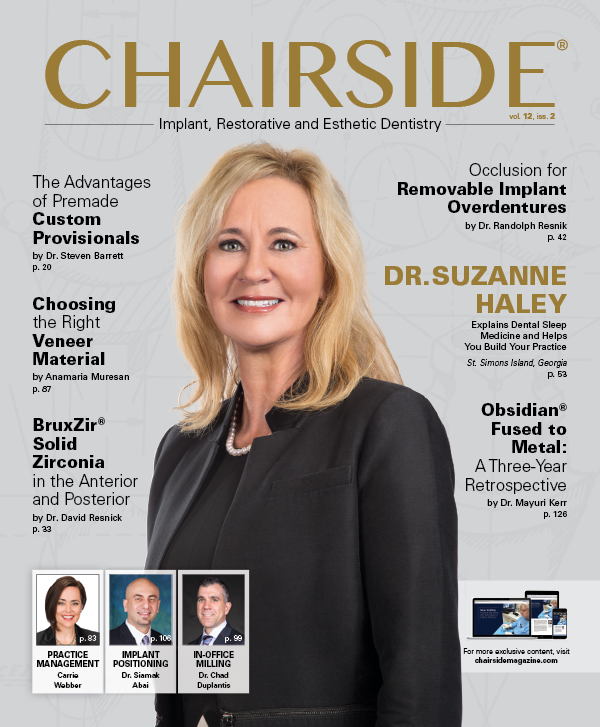Full-Mouth Rehabilitation with BruxZir® Full-Strength and BruxZir Anterior
BruxZir® Solid Zirconia has always served my patients well, but for many years I used it exclusively in the posterior, where the exceptional durability of BruxZir Full-Strength is ideal for withstanding parafunctional forces. Since the release of BruxZir Anterior in 2015, I’ve been able to deploy monolithic zirconia throughout the mouth and achieve the lifelike restorations needed for cases in the esthetic zone. In addition to its esthetic advantages, BruxZir Anterior exhibits an average flexural strength of 650 MPa, and I’ve yet to encounter a single fracture with restorations produced from either material.
The following case study highlights how BruxZir Solid Zirconia offers an effective solution for both the anterior and posterior regions of the mouth. A straightforward protocol for full-mouth rehabilitation is described, illustrating how today’s restorative materials and CAD/CAM technology can be used to develop the optimal restorative design for patients confronted by significant functional and esthetic concerns.
CASE REPORT:
The patient visited my office seeking treatment for teeth suffering from attrition, loss of VDO and significant sensitivity due to severe bruxism. The condition of the patient’s teeth was causing extreme discomfort and, as a business executive who frequently interacts with the public, he had esthetic concerns with his worn-down dentition. Preliminary impressions were taken so that BioTemps® Provisionals (Glidewell Laboratories; Newport Beach, Calif.) could be fabricated prior to treatment. When the patient returned for final impressions, the teeth were prepared and the BioTemps Provisionals were fitted and modified to establish proper form, function and VDO. Full-arch impressions were submitted to the lab, which used CAD/CAM software to incorporate the alterations made to the BioTemps crowns into the final restorative designs. BruxZir Full-Strength restorations were fabricated for the posterior, while BruxZir Anterior crowns were produced for teeth #22–27 and #5–12, providing a combination of strength and esthetics that was ideal for the patient.
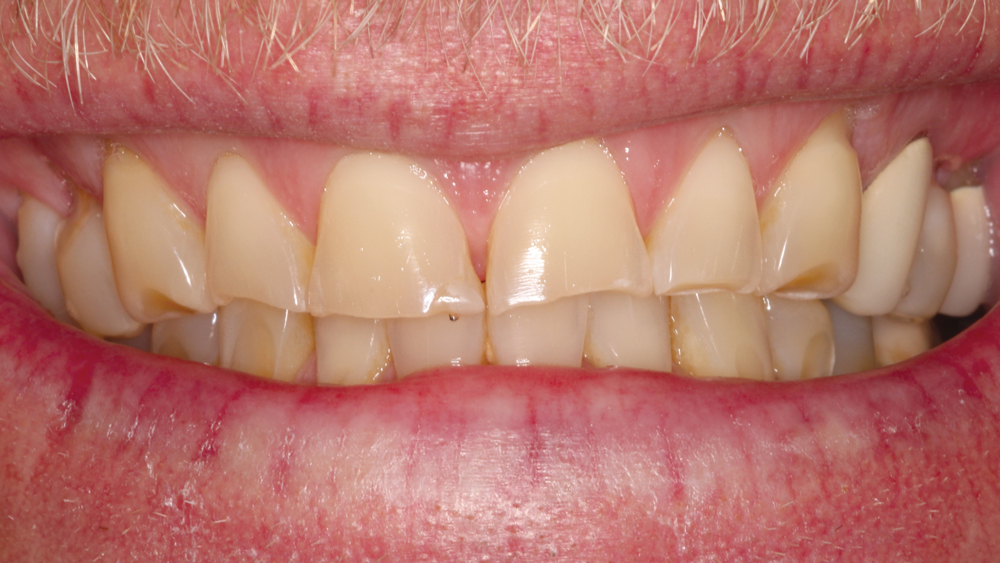
Figure 1: The patient sought a restorative solution for his worn-down teeth resulting from bruxism, which were causing discomfort and esthetic concerns. Note the significant wear to the incisal edges of the anterior teeth.
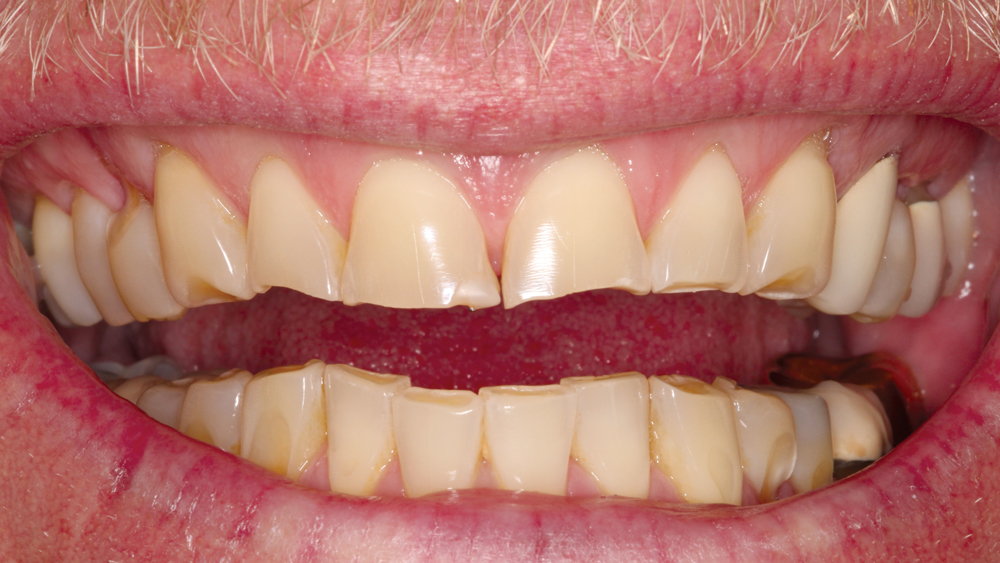
Figure 2: The patient exhibited significant loss of tooth structure throughout the mouth due to clenching and grinding. Restorations were needed to reestablish VDO and address the significant loss of tooth structure and the resultant sensitivity.
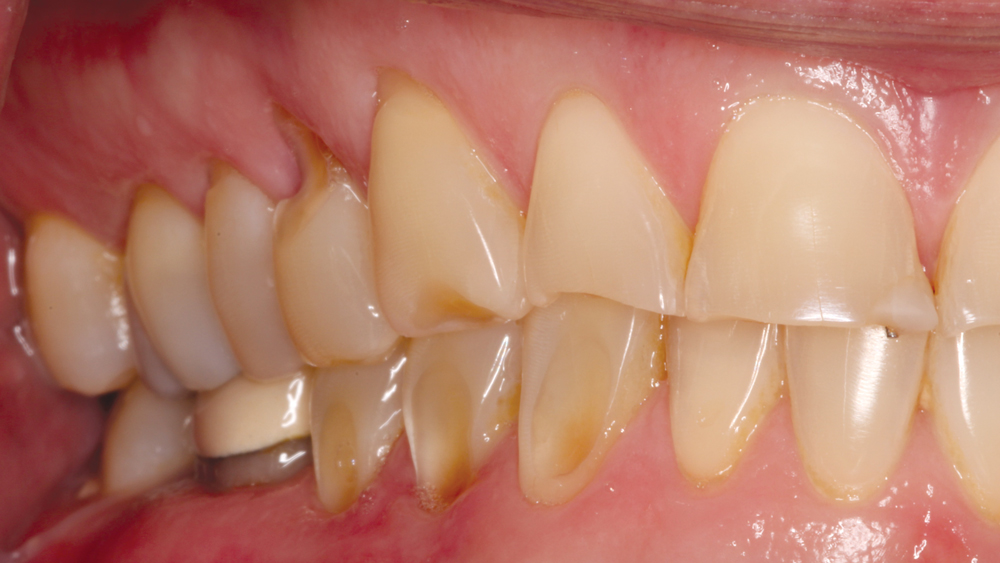 Figure 3a
Figure 3a
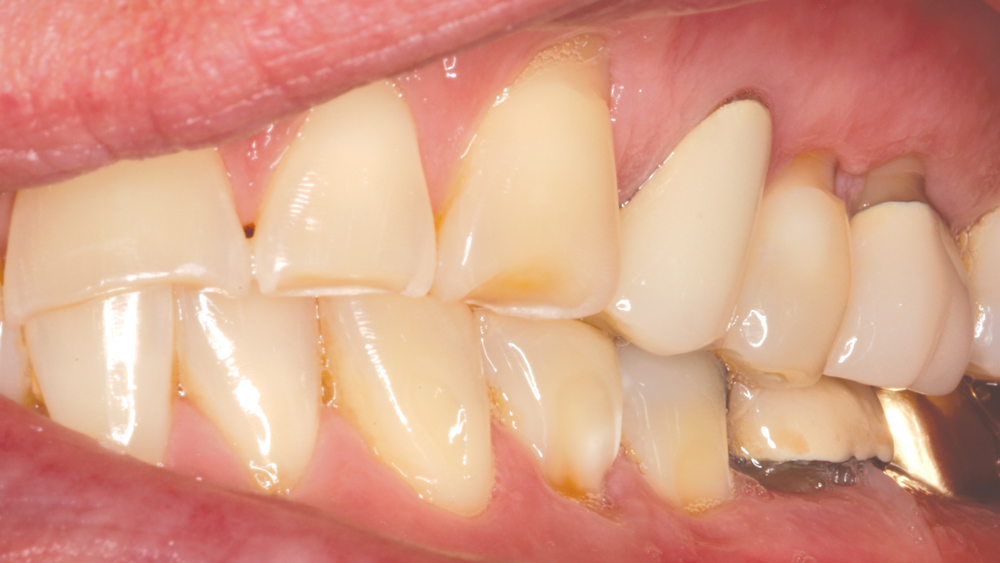 Figure 3b
Figure 3b
Figures 3a, 3b: Right and left lateral views exhibit significant abfractions in the posterior as well as prior restorations that were delivered following root canal treatment and fractures. The patient was unhappy with the gingival recession and margins around his existing crowns. Full-arch impressions were taken, and the case was sent to the lab so BioTemps restorations could be fabricated.
 Figure 4a
Figure 4a
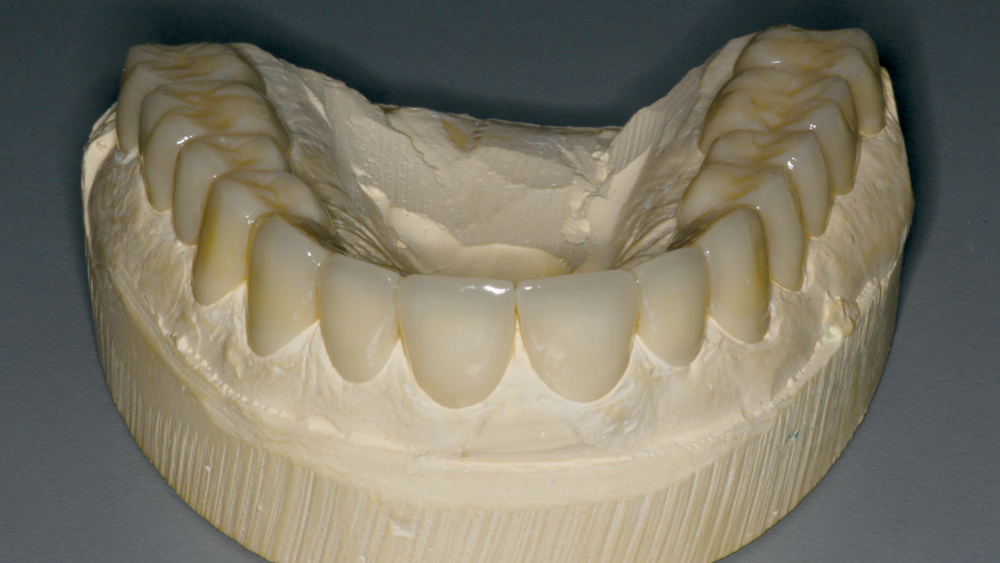 Figure 4b
Figure 4b
Figures 4a, 4b: The CAD/CAM-produced BioTemps crowns, which I typically use for cases involving multiple units or challenging esthetics, were received from the lab. The crowns were relined and seated in the mouth, and afforded the opportunity to fine-tune the restorative designs prior to fabrication of the final BruxZir restorations.

Figure 5: The teeth were prepared and the BioTemps Provisionals were fitted quadrant by quadrant. This allowed the proper VDO to be established sequentially, beginning with the right side of the mouth. Here, the seating of the BioTemps restorations over teeth #2–8 and #25–31 is shown. Minor adjustments were made to the lengths, margins and occlusal contacts of the temporary crowns.
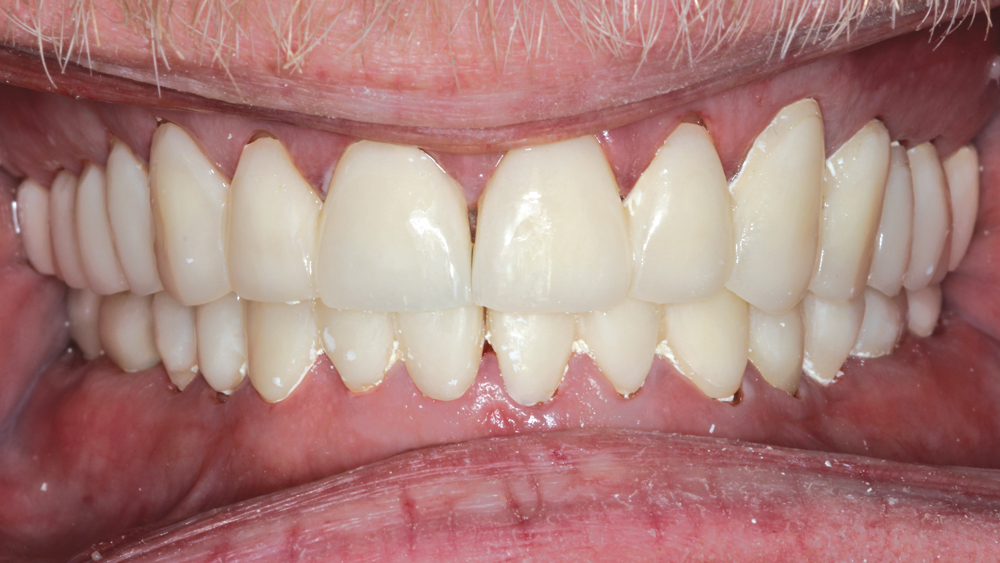
Figure 6: Teeth #9–15 and #18–24 were then prepared and fitted with the BioTemps crowns. A two-piece bite registration was taken and utilized to carry over the newly established VDO from the right side of the mouth to the left.
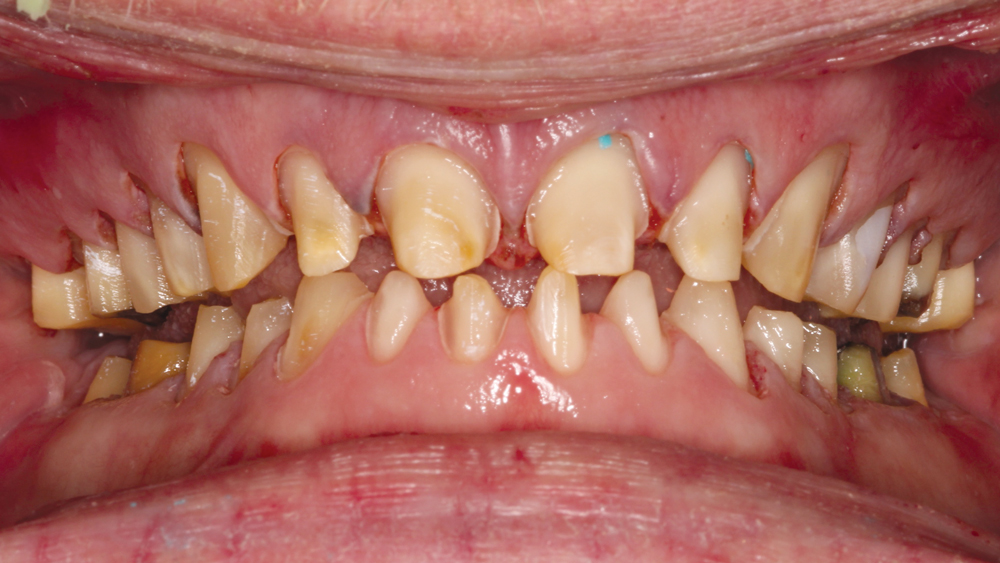
Figure 7: A majority of the teeth were prepared with shoulder margins, including what amounted to a 2 mm occlusal reduction after accounting for the existing occlusal and incisal wear. The lower anterior teeth were prepared with a heavy chamfer margin. Full-arch impressions were taken using a one-cord technique and vinyl polysiloxane (VPS) material.

Figure 8: After the impressions were made, the BioTemps crowns were delivered using a temporary cement. In addition to helping establish proper occlusion, contours, margins and vertical dimension, the BioTemps crowns served as esthetic temporaries for the patient. The case was returned to the lab and instructions were provided on the Rx to capture the modifications made to the BioTemps Provisionals, including measurements of the new crown lengths where applicable.
 Figure 9a
Figure 9a
 Figure 9b
Figure 9b
Figures 9a, 9b: The digital designs for the final restorations were updated with the changes made to the BioTemps crowns. In the posterior, BruxZir Full-Strength was selected for its ability to withstand the forces of bruxism and thereby maximize the longevity of the restorations. For the more esthetically demanding restorations spanning teeth #22–27 and #5–12, BruxZir Anterior restorations were chosen.
 Figure 10a
Figure 10a
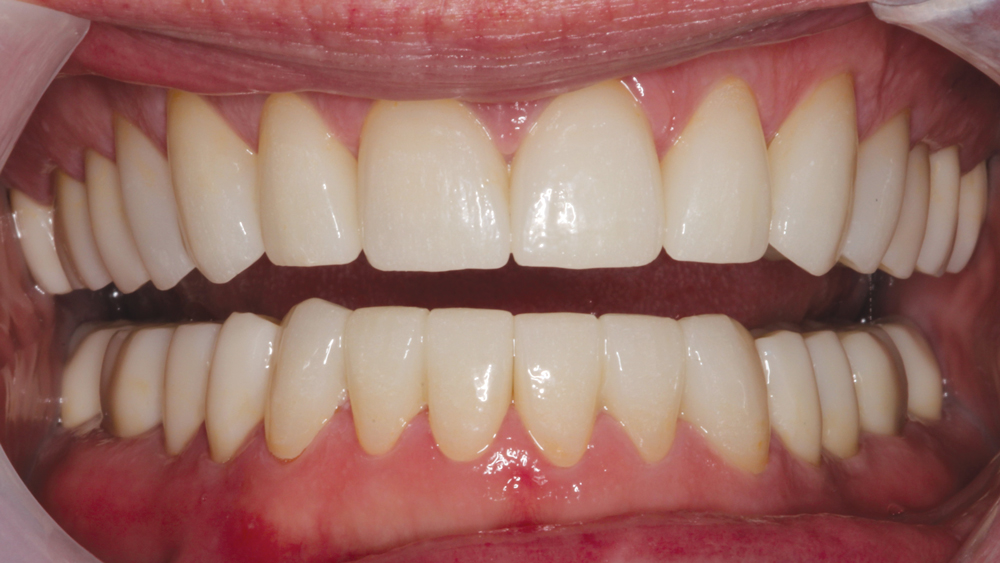 Figure 10b
Figure 10b
Figures 10a, 10b: The final restorations were delivered using GC Fuji PLUS™ cement (GC America; Alsip, Ill.), and minimal adjustments were required. The BruxZir Full-Strength crowns for teeth #18–21, #28–31, #2–4 and #13–15 were splinted to help distribute the substantial functional forces in the posterior. BruxZir Anterior bridges were delivered over teeth #22–24 and #25–27, where prosthetic retention and durability were a concern due to the small size of the prepared teeth. Individual crowns were fabricated for #5–12 to ease cleaning for the teeth in the esthetic zone.
CONCLUSION
I’ve been utilizing BruxZir Solid Zirconia for many years, and the quality and consistency of restorations produced from this durable material have been excellent. With options available for both the posterior and anterior regions of the mouth, this versatile material can be used to provide a high-strength, esthetic solution for virtually any case, from single-unit crowns to full-mouth reconstructions.

